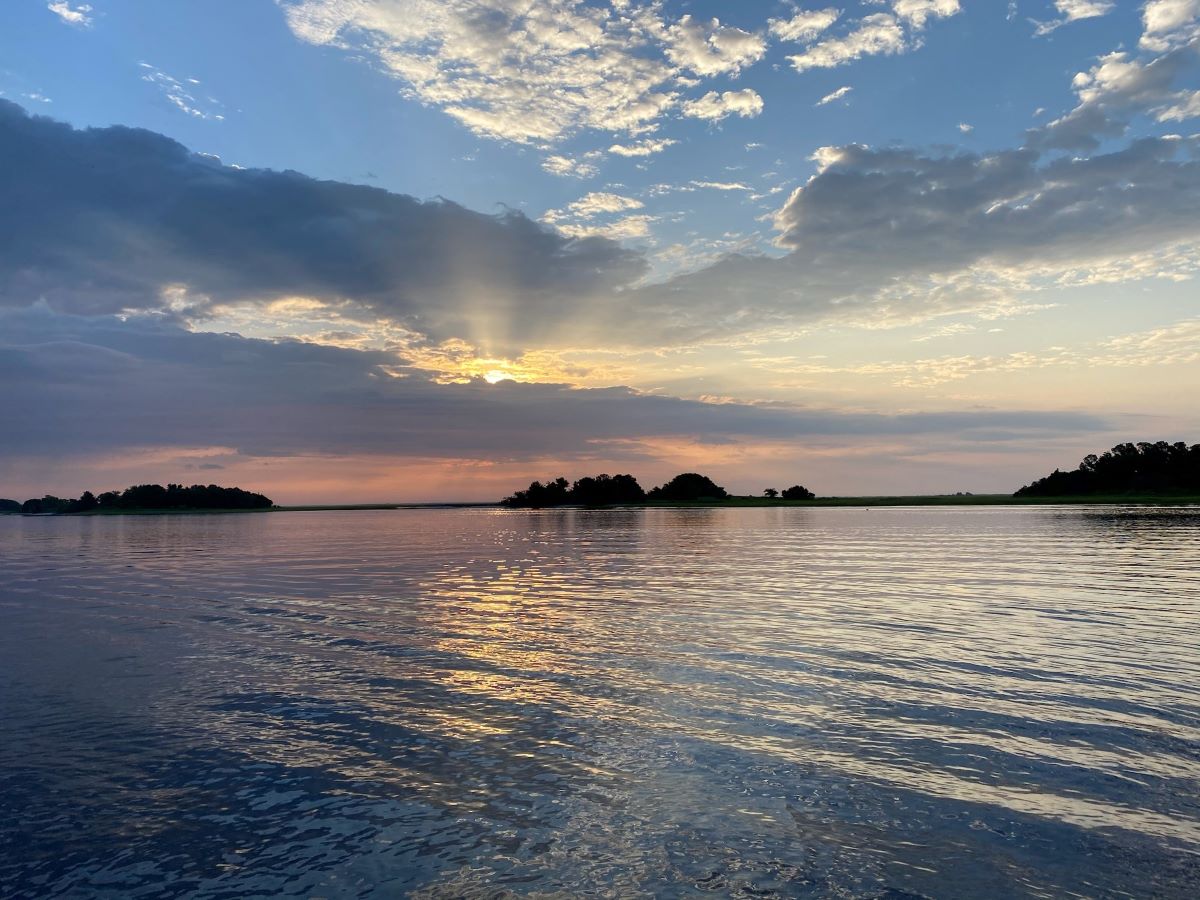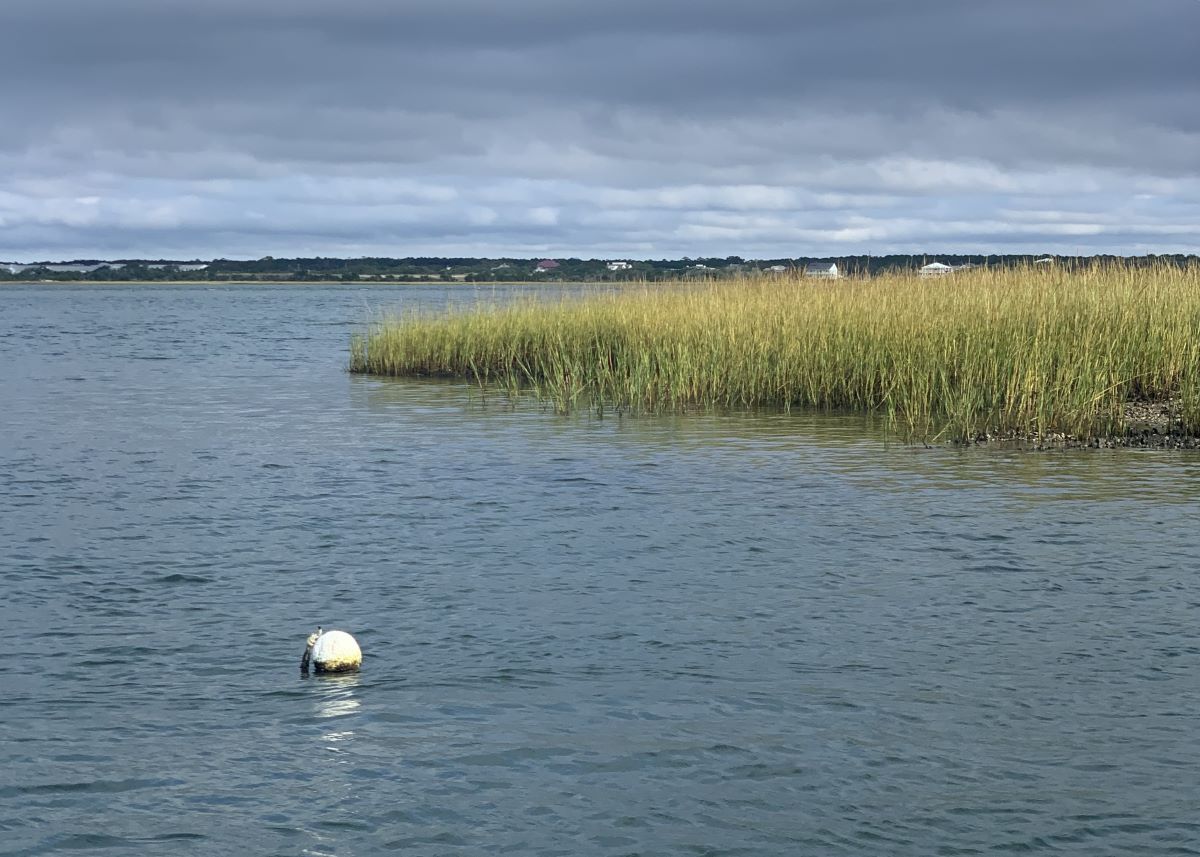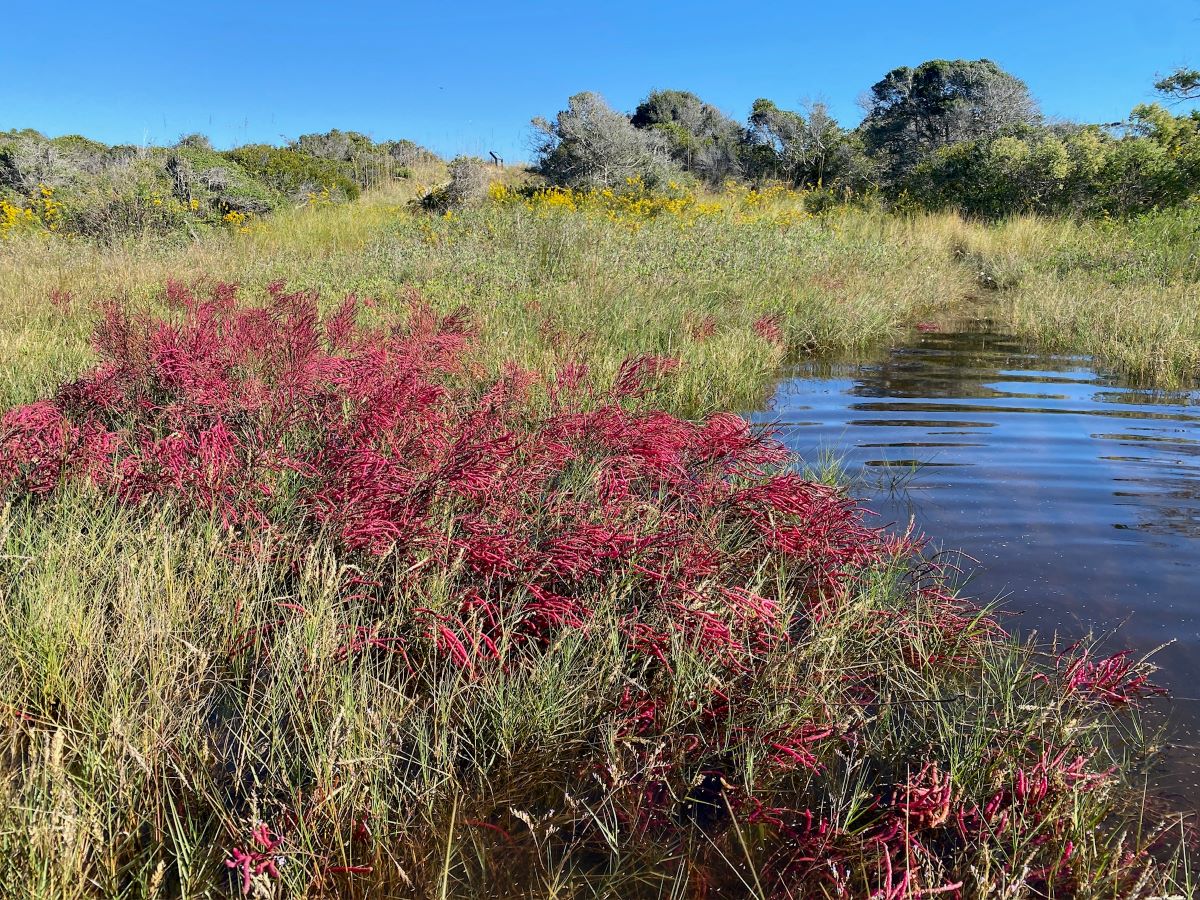
North Carolina’s coast is made up of more than 2 million acres of estuarine habitat, transition areas where fresh water from rivers meet the salty water of the sea.
Restore America’s Estuaries, the National Estuarine Research Reserve Association and the Association of National Estuary Programs have sought to draw attention to these fragile ecosystems that are continually facing challenges by celebrating National Estuaries Week, Sept. 21-28.
Supporter Spotlight
National Estuaries Week is a time to appreciate “the countless recreational, economic, and environmental benefits that our estuaries provide while acknowledging that they are under threat from a warming climate and continued development that can damage these national treasures,” Daniel Hayden, president and CEO of Restore America’s Estuaries, said in a statement. “We hope you take time during National Estuaries Week to enjoy your local estuary and celebrate the benefits it provides.”
First held in 1988, National Estuaries Day later was expanded to a weeklong celebration. Last year, there were 36 events in 11 different states with more than 11,400 volunteers. This week, around 40 projects have taken place or are scheduled across the country, a handful of on the North Carolina coast. For a full list of events, visit the website.
The North Carolina Coastal Reserve and National Estuarine Research Reserve Program Manager Rebecca Ellin said there is still time to take part in activities planned to celebrate North Carolina’s estuaries.
The reserve program is made up of 10 state-protected sites totaling more than 44,000 acres of estuarine land and water. Four of the sites are under federal protection as well, in partnership with the National Oceanic and Atmospheric Administration. Under the North Carolina Department of Environmental Quality’s Division of Coastal Management, the land acquisition program was established in early 1980s as part of the North Carolina Coastal Area Management Act that went into effect in 1974.
Taking place all week is the Bioblitz at three reserve sites: Masonboro Island, Kitty Hawk Woods, and Rachel Carson in Beaufort. Visitors are encouraged to take photos of flora and fauna and upload them to iNaturalist, a website for the public to record observations while out in nature.
Supporter Spotlight
“Documentation of species at reserve sites contributes to natural occurrence records and provides baseline data for existing species,” Ellin said.
Reserve staff will have booths 9 a.m. to 1 p.m. Saturday at Olde Beaufort Farmers’ Market in Beaufort for Celebrate Estuaries Day and at the Femme in STEM event 9 a.m. to 4 p.m. at the North Carolina Aquarium at Fort Fisher.
Femme in STEM showcases the variety of science, technology, engineering and mathematics fields that are open for career paths, and is a celebration of women in STEM fields. The event “reminds how important it is for young girls to see someone like themselves in science and other STEM subjects. Reserve staff will have a booth for the event and engage all ages in hands-on learning activities,” Ellin explained.
The North Carolina Coastal Federation is kicking off its weekend with an estuaries-themed movie night starting at 6 p.m. Friday in its Wrightsville Beach office. Staff will have a booth at the Olde Beaufort Farmers’ Market Saturday as well.
The nonprofit is a member-supported organization with offices in Wanchese, Newport and Wrightsville Beach, and is one of the 10 member organizations of Restore America’s Estuaries.
But first, what is an estuary?
Coastal Federation’s Education Coordinator Bonnie Mitchell in the Wrightsville Beach office said that estuaries “create a unique habitat abundant with life.”
“These coastal water bodies support a diverse range of species, filter pollutants from the water, and act as natural buffers against storms. They play a crucial role in maintaining healthy ecosystems that directly impact public health by improving water quality, supporting fisheries that provide nutritious food, and protecting shorelines from erosion and flooding,” Mitchell said.
Often called “nurseries of the sea,” Coastal Education Coordinator Rachel Bisesi with the central office said that “estuaries provide a safe haven for many baby sea animals to grow up, since there is a plethora of food and hiding spaces, and fewer large predators than in the open ocean. Almost all seafood spends part of its life in an estuary and keeping them healthy is important for coastal communities and the economy.”
Education and Outreach Director Sara Hallas in the Wanchese office added that estuaries are her “favorite habitat” and loves “that there’s always dynamics that keep the estuary ever changing and there’s always something new to discover. Just as the estuary is important for animals to rest and find refuge, it serves a similar purpose for people to reflect and connect.”
Hallas echoed Bisesi that these habitats are important nursery grounds for animals to find shelter in calm water from larger predators, and for aquatic wildlife to lay their eggs and raise their young, and swim out to deeper waters when they’re ready.
“This supports the Federation’s motto, ‘No Wetlands, No Seafood,’ as the majority of the seafood that’s harvested — commercially and recreationally — depends on the estuary at some point in its life cycle. Estuaries are also important areas for animals to rest and refuel during long migrations,” Hallas said.
Ellin said that there is a lot of diversity found in the coastal and estuarine habitats along North Carolina’s coast since it includes two different biogeographic regions — the northern extent of southern species and the southern extent of northern species — and different tidal ranges and types of sounds.
The reserve sites “protect a range of coastal habitats found in North Carolina and are representative of the diversity of these conditions. Example habitats protected by reserve habitats include salt marsh, maritime forest, ocean beach, mud flat, maritime forest, swamp forest, pond pine woodlands, adding that these coastal habitats comprise North Carolina’s estuaries.”

Albemarle-Pamlico National Estuary Partnership, or APNEP, Director Bill Crowell said that preserving estuaries is crucial for several reasons, including estuaries’ ecosystem function and biodiversity, economic value, water quality, flood mitigation and cultural significance.
Like the reserve program, APNEP is under the state Department of Environmental Quality. APNEP is one of the first of 28 National Estuary Programs established by the Clean Water Act in the late 1980s, and protects around 28,000-square-mile watershed in southeastern Virginia and northeastern North Carolina.
The Albemarle-Pamlico region is one of the largest and most productive estuarine ecosystems in the United States, Crowell said.
“Estuaries are essential for functional ecosystems as they serve as vital habitats for a wide range of species, including fish, birds, and invertebrates. They provide breeding and nursery grounds, supporting both terrestrial and aquatic ecosystems,” he said. “Estuaries support important economic activities such as fishing, tourism, and recreation. Healthy ecosystems contribute to vibrant local economies, providing jobs and supporting livelihoods.”
Estuaries improve water quality because they act as natural filters, by trapping pollutants and sediments,” Crowell said. “This is essential for maintaining the health of both the estuary itself and the coastal waters it connects to,” Crowell said. And estuaries help with flooding. “Healthy estuarine ecosystems can absorb excess rainfall and storm surge, reducing the risk of flooding in surrounding communities and enhancing resilience to climate-related impacts.”
There’s also the social connection. “Many communities have deep cultural ties to estuaries, relying on them for food, recreation, and heritage. Preserving these areas helps maintain cultural identities and traditions,” he said.

Ellin explained that the reserve sites that stretch from North Carolina’s northern border to the southern border are protected for long-term research, education and stewardship.
“Research and stewardship work informs management of our sites and North Carolina’s coastal resources as they face increased use and changing environmental conditions by monitoring change and testing and evaluating restoration techniques such as living shorelines,” Ellin said. “Teachers, students, and decision-makers learn about the importance of our estuaries through interpretive field trips at the sites and how to incorporate science into their classrooms and daily decisions that may impact the coast and estuaries.”
Estuaries not only protect habitat and provide platforms for research and education, estuaries offer storm protection and economic benefits for nearby communities. “Protecting estuaries protects coastal habitat and the contributions they provide to healthy ecosystems and communities,” Ellin said.
All three of the Coastal Federation’s educators recognized that these ecosystems are increasingly under threat.
“Habitat loss and development, as well as stormwater pollution and climate change impact the health of the estuary,” Bisesi said.
Mitchell said that pollution, overdevelopment and climate change jeopardize these vital resources. “If we don’t act now to protect estuaries, we not only risk losing critical wildlife habitats but also endanger the well-being of our communities. Protecting estuaries is essential not only for biodiversity but for safeguarding public health and ensuring the sustainability of coastal life.”
Hallas added that, in addition to the risks Mitchell mentioned, estuaries are also at risk from the recent ruling that drastically reduced protections of wetlands across the United States. “How could we not protect something that’s so valuable to all living things, including the source of life: clean water.”
Hallas said that because estuaries provide protection from flooding, storm surge, erosion and water quality, “I feel like it’s our job to protect them in return.” Estuaries are “a haven of beauty on the North Carolina coast, a refuge for both humans and wildlife.”
The Coastal Federation publishes Coastal Review.








